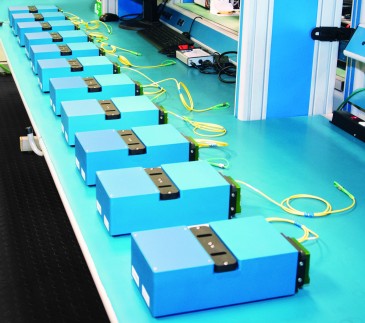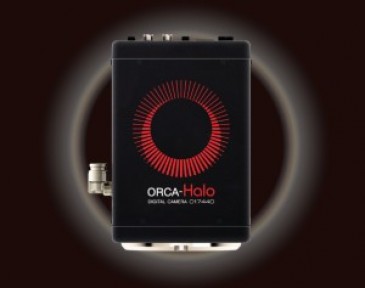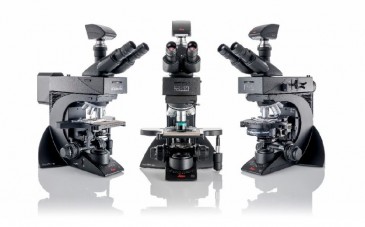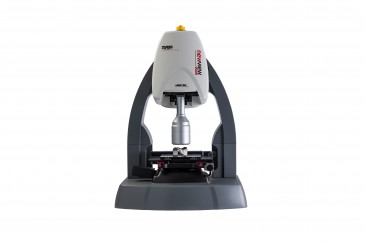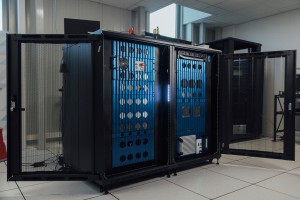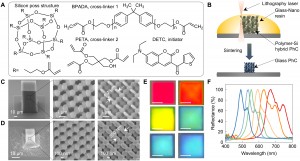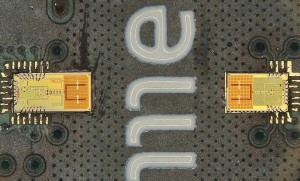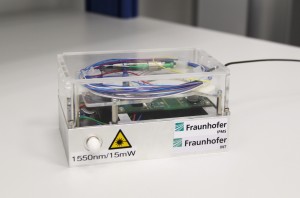
Researchers at the Fraunhofer Institute for Technological Trend Analysis INT and the Fraunhofer Institute for Photonic Microsystems IPMS in Germany have developed a light-based, smart anti-burglary protection system that recognizes any attempt to manipulate a window.
Current glass-break detectors trigger an alarm when the window pane breaks but lack in detecting ways burglars temper with glass. Conventional security glass is interwoven with metal threads that tear when there’s mechanical damage, which activates the alarm. However, if a cutting torch or a drill is used to damage the glass, conventional systems react too late or not at all.
Fraunhofer’s method works differently. “The new system quickly and dynamically records thermal and mechanical stresses from external causes,” explains Thomas Loosen at Fraunhofer INT. “Even a gentle knock against the security glass or manipulation through the use of a flame is enough to trigger the alarm.”
Optical sensor with fiber Bragg grating
“The external force applied to the pane changes its mechanical characteristics, and the system detects this change,” Loosen says. “This method of monitoring glass panes is based on a glass-break sensor built inside an optical fiber by means of fiber Bragg grating, meaning optical interference filters inscribed in optical waveguides. The fiber optics can be fitted in the corner of the windowpane or in other positions.”
The sensitive optical sensor identifies when the transmitted wavelength of light changes due to deviations in temperature of elongation through pressure (i.e., the distance between the grating elements changes). If the changes surpass a predefined threshold, the alarm system receives a signal. The system can be adapted to various applications by adjusting that threshold. “In high-security zones, the evaluation unit can be located far away from the security glass, as the fiber Bragg grating is able to transport light in the glass fiber over a distance of several kilometers,” Loosen points out.
Fraunhofer’s smart alarm system, which uses light instead of electricity and fiber optics instead of copper wires, recognizes patterns to avoid false alarms. Fiber optics are resistant to electromagnetic interference, so they are not disturbed by microwave emissions like conventional alarm systems would be, for instance.
Preventing false alarms
“Another important and unique advantage of the Fraunhofer system is that fiber optics are resistant to electromagnetic interference,” Loosen says. “Electronics can be disturbed by means such as microwave emissions, whose pulses can incapacitate conventional alarm systems or cause an unwanted alarm.” What’s more, the system’s pattern recognition capability prevents false alarms triggered by everyday vibrations. In other words, the rigorously tested smart alarm system distinguishes between the wavelength changes caused by a bird or a football from those caused by a hammer, a baseball bat or a drill, according to Fraunhofer.
Potential other applications
The system is able to protect not only the windows of popular burglars’ targets, such as jewelry stores, but is also suitable for monitoring bridges, buildings, pipes, load-bearing structures in the aerospace industry, wind turbines and much more, according to information from Fraunhofer.
Loosen, whose team’s biggest challenge in developing the new technology was “to find a way to produce this system low-cost and small,” says the Institute is currently looking for a business partner to prepare the market entry for the new technology.
Written by Sandra Henderson, research editor Novus Light Technologies Today

























 Back to Features
Back to Features


